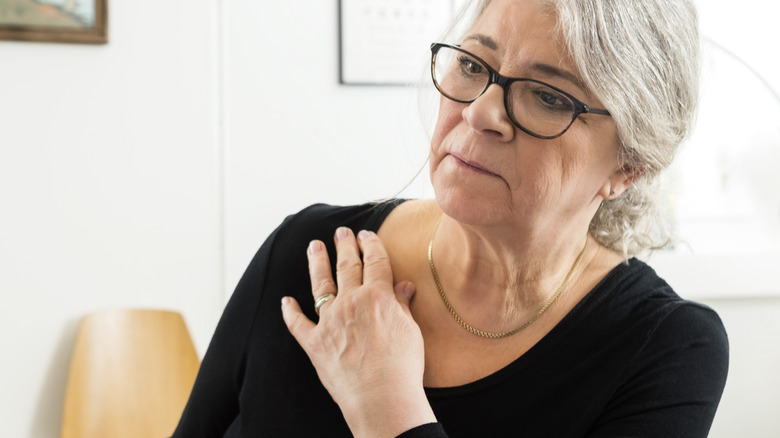Will A Torn Rotator Cuff Heal On Its Own?
We use our shoulders a lot, which means it's an area that's not easy to function with when injured. Injuries happen, though, so when it comes to the rotator cuff and such an important joint, you may wonder what your treatment options really are.
According to the Mayo Clinic, the rotator cuff is the group of muscles and tendons surrounding the shoulder. They work together to form the complex joint that allows your shoulder so much pain-free movement, especially when reaching upward.
Rotator cuff injuries are common, especially in older adults and those who repeatedly perform overhead movements. Rotator cuff tears, specifically, affect around 2 million people in the United States every year, reports the American Academy of Orthopaedic Surgeons.
A rotator cuff tear occurs when one of the tendons in the joint is torn or completely separated from the head or end of the upper arm bone called the humerus which inserts there. Tears can occur over time, with the tendons fraying, or instantly, such as during a fall.
Symptoms include shoulder pain that can be intense, even at rest; weakness; and crackling.
To diagnose a rotator cuff tear, a doctor will perform a physical exam and then move on to an X-ray, ultrasound, or magnetic resonance imaging (MRI) to better look at the tendons.
What does treatment look like for a rotator cuff tear, and is it possible to heal it at home?
Rotator cuff tears don't all require surgery
Symptoms of a rotator cuff tear may appear as other shoulder conditions, so it is essential to consult a medical professional as the injury can lead to disability (per American Academy of Orthopaedic Surgeons). When you can't function as you previously did or your pain level disrupts everyday life, it is necessary to have the injury diagnosed and begin the appropriate treatment.
There are multiple types of treatment for recovery from a rotator cuff tear that can be employed based on the severity of the injury. Treatment options include rest, physical therapy, anti-inflammatory medicine, ultrasound therapy, corticosteroid injection, and in the worst cases, surgery. A combination of some of these may be used without ever having to undergo surgery (via Mayo Clinic). According to the American Academy of Orthopaedic Surgeons, nonsurgical treatments improve function and reduce pain in about 80% of patients, but the tear could worsen, and full function may not return. There are multiple surgery options if the pain doesn't subside with nonsurgical methods or if you are very active overhead with your arms.
In tendon repairs, a surgeon will either go arthroscopically, with a tiny camera, or directly through a larger incision to reattach the torn or disconnected tendon to the bone (via Mayo Clinic). A nearby tendon will be taken and used as a replacement for a badly damaged shoulder tendon in a tendon transfer. Lastly, a new artificial joint is created in a full shoulder replacement case when the original is massively damaged.


